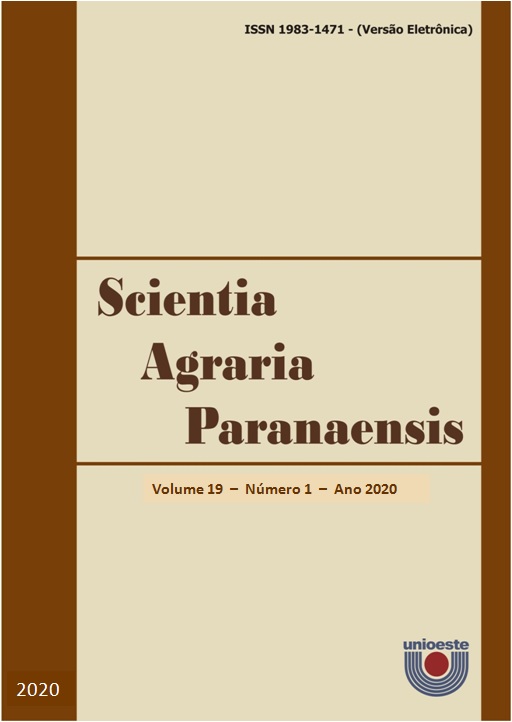Soil temperature and agronomic implications in two regions of the State of São Paulo, Brazil
DOI:
https://doi.org/10.18188/sap.v19i1.22578
Agências de fomento
Resumo
Plants can tolerate a wide range of soil temperature variations, but their development is affected when the soil undergoes higher or lower temperatures of certain extreme values. The aim of this study was to assess the soil temperature of two regions of the state of São Paulo, Brazil. Daily measurements of soil temperature were taken at two weather stations, one in the municipality of Adamantina (soil classified as Podzolic, Dark Red Latosol, Eutrophic, moderate A, of sandy/medium texture) and another in the municipality Monte Alegre do Sul (soil classified as Red Yellow Podzolic, of fine sandy-clayey texture) within a period of 365 days. The experimental design was completely randomized, with the two municipalities being the treatments, and 12 repetitions determined by monthly averages. The soil temperature at a 3-cm depth in Adamantina reached values above 40°C, values not observed in Monte Alegre do Sul. At a 12-cm depth, there were no differences between the municipalities. In Monte Alegre do Sul, the recorded soil temperatures proved suitable for crops, with better use of organic matter by the soil and greater stability of surface temperature throughout the day compared to Adamantina. In Adamantina, however, the use of agronomic technology is required to ensure greater stability of surface temperature. The temperature throughout the year in the soil surface layer in the Adamantina region in the afternoon was higher than in the Monte Alegre do Sul region, a fact that implies the need of differentiated agronomic technology depending on the cultivation location.Downloads
Publicado
23-05-2020
Como Citar
NASSER, M. D.; BARDIVIESSO, E. M.; AGUILAR, A. S.; ZONTA, A. Soil temperature and agronomic implications in two regions of the State of São Paulo, Brazil. Scientia Agraria Paranaensis, [S. l.], v. 1, n. 1, p. 12–17, 2020. DOI: 10.18188/sap.v19i1.22578. Disponível em: https://saber.unioeste.br/index.php/scientiaagraria/article/view/22578. Acesso em: 24 dez. 2025.
Edição
Seção
Artigos Científicos
Licença
Aviso de Direito Autoral Creative Commons
Política para Periódicos de Acesso Livre
Autores que publicam nesta revista concordam com os seguintes termos:
1. Autores mantém os direitos autorais e concedem à revista o direito de primeira publicação, com o trabalho simultaneamente licenciado sob a Licença Creative Commons Attribution que permite o compartilhamento do trabalho com reconhecimento da autoria e publicação inicial nesta revista.2. Autores têm autorização para assumir contratos adicionais separadamente, para distribuição não-exclusiva da versão do trabalho publicada nesta revista (ex.: publicar em repositório institucional ou como capítulo de livro), com reconhecimento de autoria e publicação inicial nesta revista.
3. Autores têm permissão e são estimulados a publicar e distribuir seu trabalho online (ex.: em repositórios institucionais ou na sua página pessoal) a qualquer ponto antes ou durante o processo editorial, já que isso pode gerar alterações produtivas, bem como aumentar o impacto e a citação do trabalho publicado (Veja O Efeito do Acesso Livre).
Licença Creative Commons
Esta obra está licenciada com uma Licença Creative Commons Atribuição-NãoComercial-CompartilhaIgual 4.0 Internacional, o que permite compartilhar, copiar, distribuir, exibir, reproduzir, a totalidade ou partes desde que não tenha objetivo comercial e sejam citados os autores e a fonte.


